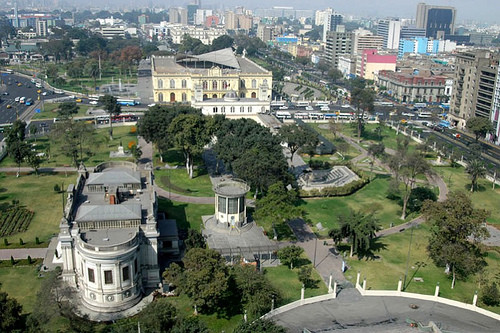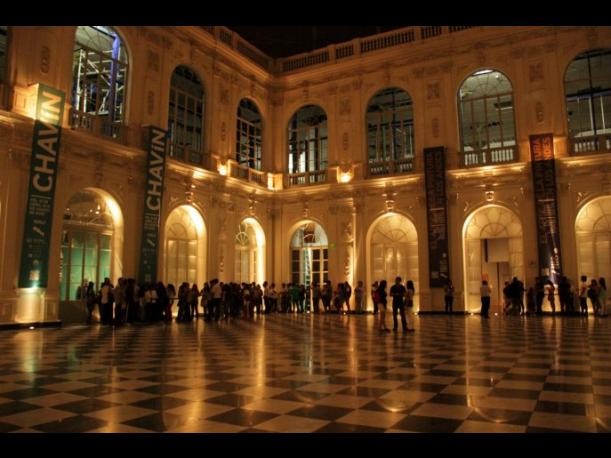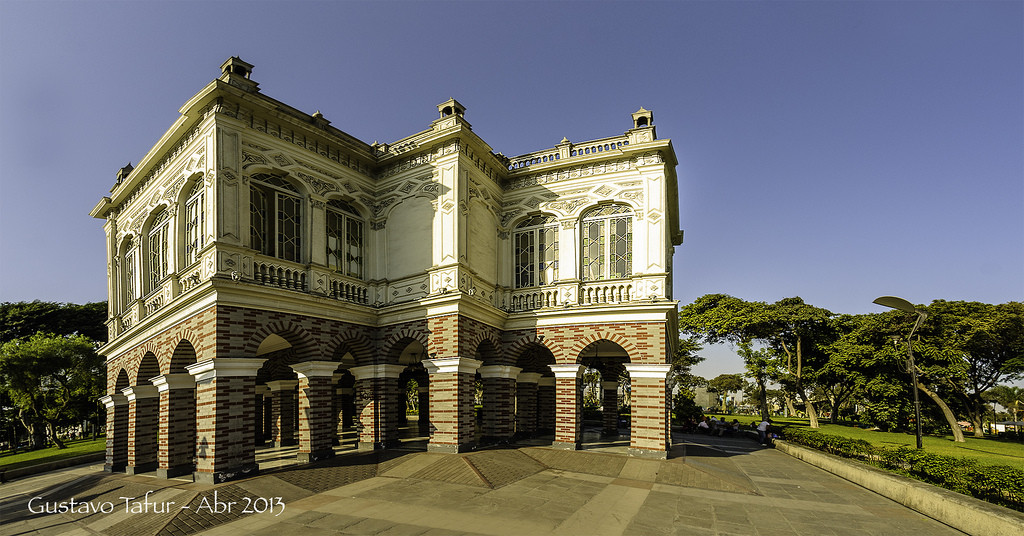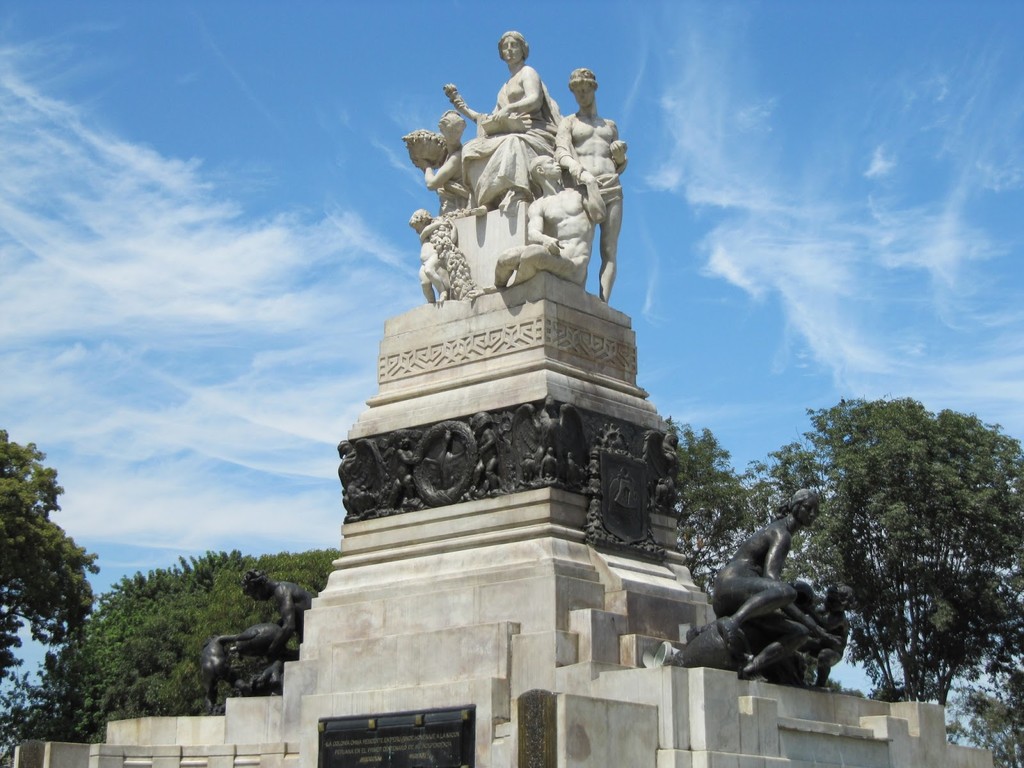Exhibition Park, Lima
The Art Park of Lima!
Hello, everybody! I hope you are well. Today I want to tell you about a park in the centre of Lima, known as the Exhibition Park. It is an emblem of Lima and has lots of history. If you come from the districts surrounding Lima, such as Lince, Pueblo Libre or Miraflores, this park is one of the first things that you’ll see at the end of what is known as the express road, parallel to Arequipa Avenue.

The park has entrances on both sides - one on the side of 28 de Julio, and one entrance on the Expressway side. If you know the city centre of Lima, I would advise you to enter from the 28 de Julio and from there follow the path to the historic centre. If you enter from this side, you will see that the door is engraved name of the park as well as its year of construction, 1872, in green letters.
The park was created by Manuel Atanasio Fuente and an Italian, Antonio Leonardi. Here you can see a Lima that wanted to somehow forget its colonial past and start being modern, through its European influences.
The Exhibition Park has played host for some special events, such as the first food fair of Mistura. This food fair is now held on the green coast in the district of Magdalena in September - add it to your calendar!
In the park you can find different food stalls, food fairs at the weekends and some stalls with Andean products. For example, I remember that once one of my uncles took my sister, my cousin and I to buy us some coats at these Andean stalls, but obviously I don't have the coat anymore! But in truth I used it for many years and it only cost about 35 soles. You can also barter with the stall owners, which is part of doing business in Lima and in the rest of Peru.
The park has lots of different architectural features, such as the Byzantine pavilion, the Moorish pavilion and a Chinese fountain, which was given by the Chinese Colony to Peru on the centennial of the Independence of Peru. This happened between 1921 to 1924, during which time Lima began to reinvent itself - the creation of the Exhibition Park was a clear example of Lima wanting to show the world its new image. For a time, Lima was also known as “the garden city” due to the many parks which can be found in the city. However, as the years pass, Lima is continuing to change and there is still a long way to go. There are still beautiful places where locals can mingle with visitors and enjoy the city, such as the Exhibition Park.
Here is a photo of the interior view of the Art Museum of Lima:

There is a very important place inside the Exhibition Park, known as MALI (in Spanish), otherwise known as the Art Museum of Lima. This museum was neglected for many years, but recently they have initiated programs to relaunch the museum, open it to the public and make it a lively place, full of culture. For example, the museum has facilities for lots of different courses: music, dance, painting, drawings and crafts. I will tell you more about the Art Museum of Lima in another blog post, including information about the canvas of the Funerals of Atahualpa, which has recently been restored. But for now, I will continue to tell you about the Exhibition Park.
By crossing the path near the Exhibition Park you can also find the Military Museum and the Italian Art Museum which also dates back to the centennial celebration of Independence. It was given to Peru by the Italian colony there. This period of time was known as the glorious years of Lima where everything possible was done to beautify the city, which was also known as "the three times crowned villa".
Here is an image of the Byzantine Pavilion:

The origins of the park date back to the late nineteenth century when Lima was holding an international exhibition and the Museum of Art of Lima was built to be the Palace of the Exhibition for that exhibition. In the park they have since built an amphitheater where music and concerts are performed in the open air. The last few times that I went through the park there were facilities for a break dance competition and paying a symbolic entrance you could see the different young people who are passionate about art.
Here is an image of the Moorish Pavilion:

There is also a lake in the park with some species of birds, although I don’t know what they are called, and some little fishes. Inside the park you can also find a small theatre where, back in the day, television programs were recorded, including those on Channel 7 and its Creole Music programme which my dad used to watch at lunchtime.
In the park you will find some benches and lots of green areas, but guess what? You are not allowed to sit on the grass - if you do, one of the security guards will tell you to get up. In truth, it was normal to not be allowed to sit on the grass, but when I went to the park with some of my foreign friends, it opened my eyes and I realised that this is something very typical of Lima! So you know when you go to the park you'd better sit on the benches or around the Chinese fountain!
The park is busiest during the weekends because that is when the children go with their parents to play the mini-games that are in the park on the side near the express road, But in truth, the park is so big that there is enough space for everyone.
In my opinion, the most beautiful things about the park are the Byzantine and Moorish Pavilions. However, you can't enter them, you can only see them from the outside, but they are still good places to take some very good pictures.
The park was initially much larger than it is now but to give the advance to modernity is that the park has been made smaller. It is said that previously the park even went as far as to what is now the National Stadium, and it also had a small zoo for the people of Lima. This park used to be on the the outskirts of the city, but as so many years have passed, today it is simply part of the city centre, in a city of almost 9 million inhabitants. Lima has grown so much!
This park has been home to several different stories. For example, it was used as a place to care for the injured fighters during the Pacific War which happened from 1979-1983, between Peru and Bolivia against Chile. For a short time it was also part of the Municipality of Lima itself. It was also used to house Chilean troops when Lima was invaded by the Chileans for two long years, which is actually something that very few people from Lima know. At that time, even the brides were married in black, with a white veil as a symbol of protest against the invasion of the city of kings. There are so many stories to tell in the Exhibition Park!
Metropolitan Museum of Lima:
If you love the history of Lima and want to know more, then you must go through the Exhibition Park and visit the Metropolitan Museum of Lima which is inside the park. This is the first virtual museum in Lima and it has an unbelievable 3D experience!
In this image you can see the facade of the Metropolitan Museum of Lima:

The Chinese Fountain:
Another thing I suggest is to visit the Chinese fountain as it is truly one of the largest marble fountains in Lima and you can take a brief rest at the foot of its circular edge. The Chinese fountain was designed, not by a Chinese, but by the same Italian who also designed the Italian Art Museum of Lima, Gaetano Moretti. The fountain was actually built in Italy. In the upper central part of the fountain you will see characters representing the international union of Peru and China, as well as two vases representing the most important rivers of these two countries - the world's largest river, the Amazon, and the yellow river respectively.
Here is an image of the Chinese fountain inside the Exhibition Park:

How can you get to the park?
To get to the Exhibition Park you can take the metropolitan and get off at the central metropolitan station and from there enter by the side of the Museum of Art of Lima. Or you can also enter by the door on the 28 de Julio Avenue, for example by taking one of the blue buses that go down Arequipa Avenue and come from Miraflores, or from the opposite direction from San Juan de Luringancho.
I hope you liked learning about the Exhibition Park in the city centre of Lima and that you will soon visit it, as you see it is a park with lots of history.
Talk to you again soon everyone!

Photo gallery
Content available in other languages
- Español: ¡El parque de arte de Lima!
- Italiano: Il parco d'arte di Lima!
Rate and comment about this place!
Do you know Exhibition Park, Lima? Share your opinion about this place.






















